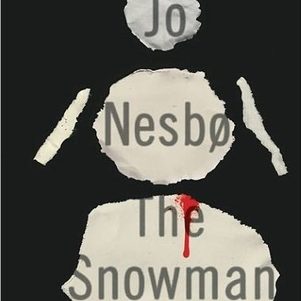The Snowman by Jo Nesbo, translated by Don Bartlett
Confession: I have a soft spot for Scandinavian crime fiction. I’ve enjoyed every author I’ve read (thus far) in this subgenre. I don’t know why. The crimes tend to be gruesome and I’m conflicted about excessive brutality in fiction.
This is my second book by Jo Nesbo and it won’t be my last. (The first was Nesbo’s MacBeth, which I thoroughly enjoyed.) It’s the first one I’ve read in the well-regarded Harry Hole series set in Oslo, Norway. As is typical in most crime novels, the series centers on a maverick cop with unusual investigative methods, alcoholic tendencies, and few friends.
Inspector Harry Hole is tracking a brutal serial killer.
The killer is targeting women, decapitating them, and making their heads part of a macabre snowman. (Makes me hesitant to make a snowman!) At the same time, Hole is dealing with his ex’s newly-announced engagement, mourning the death of a former colleague, and training a quick-witted (but possibly disturbed) young female investigator.
As Harry soon realizes, similar killings have happened each year on the day of the first snowfall. Just as importantly, the killings seemed designed to grab Harry’s attention; the detective is the only investigator on the Oslo force to have caught a serial killer before. Harry suspects (though his superiors are skeptical) that the killer wants to force the infamous detective to play in his deadly game. Then the killer starts changing the rules.
As I noted, the violence in The Snowman is gruesome.
I’m conflicted on this point. Elsewhere, I’ve written about whether the graphic description of violence in fiction is dehumanizing and voyeuristic. For me, it helps when the victims have been developed as characters before their murder. So we read about their fears, their indiscretions, and, at one point, an attempt to flee their killer. This is either voyeuristic (a common complaint in the negative reviews of this book) or humanizing. At least they aren’t seen exclusively as victims and only after their degrading deaths. I’m ambivalent, though, as to whether this is wishful thinking on my part.
Really what made the violence bearable to me was Harry.
He’s a man who is “afraid of his own humanity,”–to quote his old boss–but at points it surfaces. Then we see a hurt, vulnerable man who loves fiercely and longs for deep relationships. He has connected with his ex’s teen son Oleg, who reminds him, I think, of himself at that age; his ex’s engagement to another man threatens the tentative relationship between Harry and Oleg.
In one heart-wrenching scene, Harry awakens the young son of a missing/presumed dead woman. The boy calls out for his mommy. Nesbo writes,
Harry was completely unprepared for his own reaction. Perhaps it was because he was thinking of Oleg. Or perhaps because he was thinking of himself when once, as a boy, he woke up, thinking she (his mother) was still alive, and charged into his parents’ bedroom in Oppsal and saw the double bed with the duvet removed from one side.
Harry was unable to stem the flow of tears that suddenly welled up in his eyes, filling them until Jonas’ face blurred before him, and they ran down his cheeks, leaving hot trails before finding grooves that led them to the corners of his mouth and Harry became aware of his own salty taste.
—The Snowman, by Jo Nesbo, pg. 268
It’s passages like this that balance out the horrific nature of the crimes. For some people, it may not be enough.
Well developed characters. Great plot twists. Enough red herrings for a fish fry. I recommend it to fans of crime fiction.

